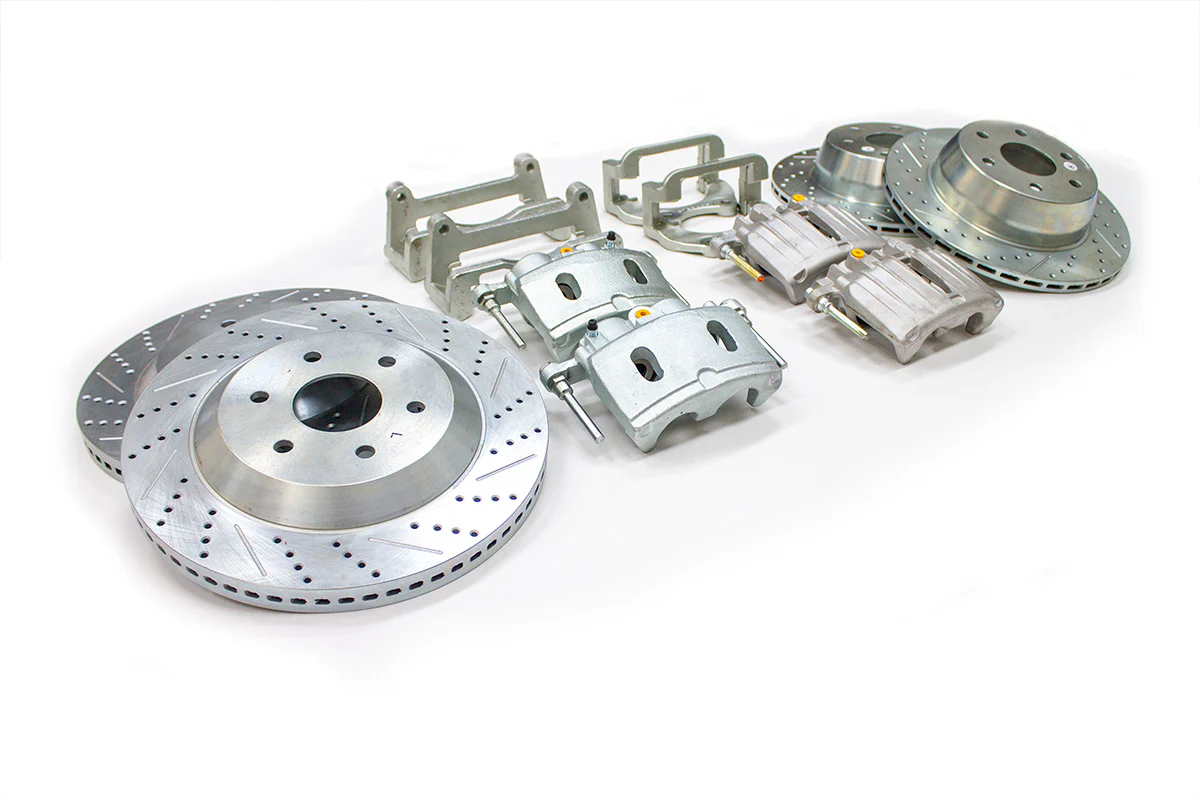When customizing a vehicle, the focus is often on horsepower, aesthetics, and handling. However, a powerful engine is only as good as the braking system that can safely bring it to a stop. Upgrading your brakes is one of the most effective ways to enhance your car’s performance, safety, and visual appeal. This guide explores the key performance brake considerations for those looking to customize their ride, ensuring you make the right choices for your vehicle and driving style.
Why Upgrade Your Brakes? The Performance Advantage
First and foremost, a performance brake system is a necessity, not just a luxury, for a modified car. Essentially, more horsepower and speed require more stopping power. Consequently, a stock braking system can be easily overwhelmed during spirited driving or on the track, leading to a dangerous condition known as “brake fade.” A performance brake upgrade, therefore, provides:
- Superior Stopping Power: Larger calipers, bigger rotors, and high-performance pads create more friction and heat dissipation.
- Consistency: Even under extreme heat, a good performance system will provide reliable, repeatable stopping performance.
- Improved Pedal Feel: High-quality brake lines and components can offer a firmer, more responsive brake pedal feel.
- Aesthetic Appeal: Large, aggressive-looking calipers and cross-drilled rotors are a signature look for performance cars.
Key Performance Brake Components and Considerations
When planning a brake upgrade, you’ll need to consider all the components that work together.
1. Brake Pads: The First Point of Contact
- Types: Performance pads come in a variety of compounds, including semi-metallic, carbon ceramic, and full ceramic. For instance, semi-metallic pads offer aggressive “bite” for track use but can be noisy and dusty. Conversely, ceramic pads offer great street performance with minimal noise and dust.
- Consideration: Your choice of pad material should be directly tied to your primary use case. A dual-purpose car might benefit from a pad that works well on both the street and track.
2. Brake Rotors: Heat Management is Key
- Types: As we’ve discussed before, rotors come in smooth, slotted, and drilled designs.
- Slotted Rotors: For performance street cars and track days, slotted rotors are a popular choice. They wipe away gases and debris, improving bite and pad consistency under heavy braking.
- Drilled Rotors: While they offer great aesthetics and wet-weather performance, the holes can be a point of stress and cracking during extreme, repeated heating cycles, making them less ideal for dedicated track use.
- Rotor Size: A larger rotor diameter provides a longer lever arm for the caliper to grab, increasing stopping power. Therefore, upgrading to a “Big Brake Kit” is a common step.
3. Brake Calipers: The Force behind the Pads
- Single vs. Multi-Piston: Stock calipers often have one or two pistons. In contrast, performance calipers feature four, six, or even eight pistons. This distributes the clamping force more evenly across the pad, resulting in more consistent pressure and superior stopping power.
- Fixed vs. Floating: Most stock calipers “float,” but high-performance fixed calipers (which are bolted rigidly to the hub) are less prone to flexing and offer a firmer pedal feel.
4. Brake Lines and Fluid: Precision and Durability
- Stainless Steel Brake Lines: Stock rubber hoses can expand under pressure, leading to a spongy pedal feel. Alternatively, stainless steel braided lines do not expand, providing a much firmer and more precise pedal feel.
- High-Performance Brake Fluid: The boiling point of brake fluid is critical. Consequently, a high-performance brake fluid with a higher boiling point is a necessity to prevent brake fade, especially on the track.
The Ultimate Upgrade: The “Big Brake Kit”
For enthusiasts who are serious about performance, a “Big Brake Kit” (BBK) is the ultimate upgrade. Typically, a BBK includes multi-piston calipers, larger-diameter rotors, and high-performance pads and lines, all designed to work in perfect harmony.
Conclusion: Don’t Forget the Brakes
In conclusion, customizing your ride is an exciting journey, but don’t overlook the importance of your braking system. By carefully considering performance brake pads, rotors, calipers, and fluid, you can match your car’s stopping power to its engine’s output. Ultimately, investing in quality performance brakes ensures that your customized vehicle is not only fast and stylish but also safe and a joy to drive.



